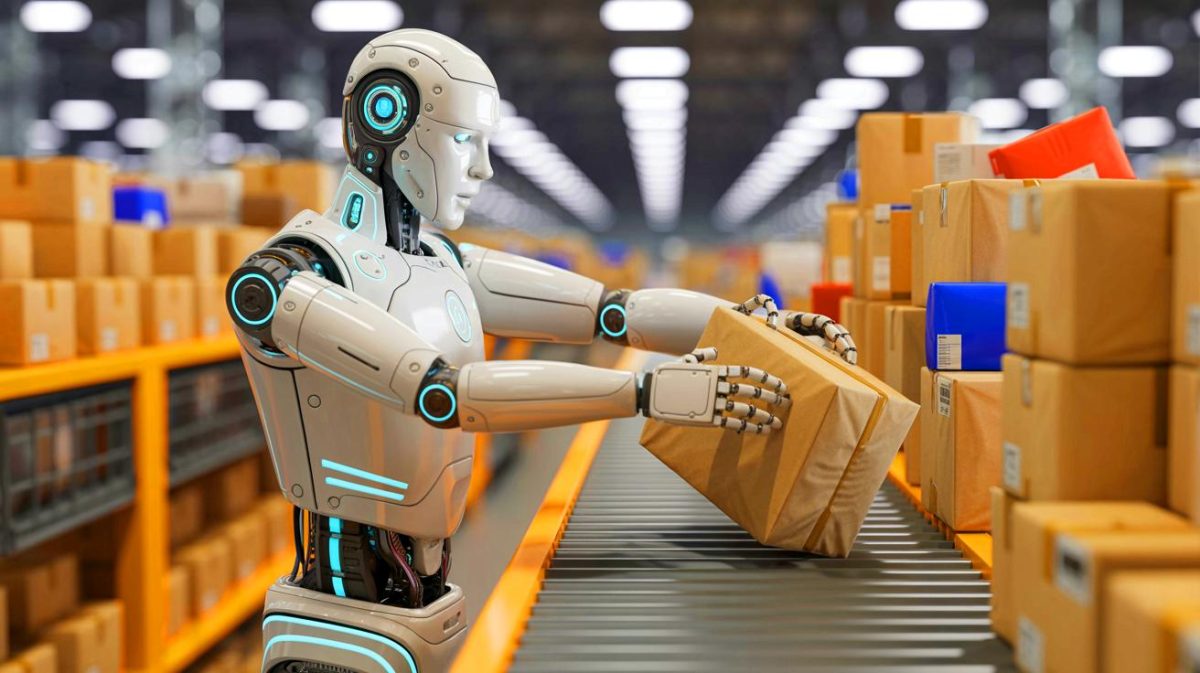| IN A NUTSHELL |
|
The world of robotics is rapidly advancing, with machines increasingly taking on tasks traditionally performed by humans. A recent breakthrough in this field is the Figure 02 robot, which has demonstrated remarkable capabilities in package sorting. This development represents a significant leap forward in automation technology, showcasing the potential for robots to handle complex tasks with efficiency and precision. As companies continue to innovate, the integration of robots like Figure 02 into the workforce could revolutionize industries reliant on manual labor, offering a glimpse into a future where humans and machines work side by side.
Unveiling the Power of Helix: A Technological Leap
The secret to Figure 02’s impressive performance lies in the Helix visuomotor system, a sophisticated technology that powers the robot’s package sorting abilities. Helix has undergone significant improvements, allowing it to process each package in just over four seconds. This speed is a notable improvement over previous capabilities, highlighting the system’s efficiency. The increase in processing speed can be attributed to a combination of more extensive training data and a more complex model. By expanding the training demonstrations from ten to sixty hours, the engineers at Figure AI have provided Helix with a wealth of real-world scenarios to learn from.
Moreover, the addition of modules for short-term visual memory and force feedback has enhanced the robot’s ability to handle packages of varying shapes and materials. This means that Figure 02 can adapt its strategy in real-time, adjusting its grip and movements to suit the characteristics of each parcel. The result is a significant jump in barcode scanning success, with the robot now achieving a 95% success rate. This level of accuracy and adaptability brings Figure 02 closer to human-like performance, paving the way for its integration into real-world logistics operations.
Revolutionizing Logistics: A Glimpse into the Future
The advancements made with Figure 02 have far-reaching implications for the logistics industry. The ability of the robot to autonomously sort packages in a fast-paced environment demonstrates the potential for AI-driven systems to revolutionize small-parcel logistics. The smooth integration of speed and accuracy improvements in Helix suggests a straightforward path for further enhancements. By continually collecting more data and refining the system’s memory and touch capabilities, Figure AI is on track to create a robot capable of handling an entire shift’s worth of sorting tasks.
One of the most intriguing aspects of Figure 02’s development is its ability to generalize learned tasks. With minimal additional training, the robot has learned to recognize human gestures, such as a worker’s outstretched hand, as signals to hand over a parcel. This adaptability indicates a future where a single learning pipeline can manage multiple warehouse tasks, from sorting to palletizing. While mass deployment is still on the horizon, the progress made by Figure AI and its competitors signals a coming era where robots become an integral part of the workforce.
Challenges and Opportunities in Robotics Integration
As promising as the advancements in robotics are, integrating machines like Figure 02 into the workforce presents both challenges and opportunities. One of the main challenges is ensuring that these robots can operate safely and efficiently alongside human workers. The ability to understand and respond to human signals is a crucial step, but further development is needed to ensure seamless collaboration. Additionally, the initial cost of deploying such advanced technology could be a barrier for some companies, although the long-term benefits may outweigh these initial expenses.
On the opportunity side, the integration of robots in the workforce could lead to increased productivity and efficiency. By handling repetitive and physically demanding tasks, robots can free up human workers to focus on more complex and creative endeavors. This shift could lead to new job opportunities in areas such as robot maintenance and programming, ultimately transforming the job market. As companies continue to invest in robotics, the potential for growth and innovation in various industries is vast.
The Path Forward: Embracing Technological Change
As we stand on the brink of a new era in automation, the advancements in robotics technology present an exciting opportunity to reshape industries and redefine the workforce. While there are challenges to overcome, the potential benefits of integrating robots like Figure 02 into everyday operations are significant. As technology continues to evolve, the question remains: how will businesses and workers adapt to this technological revolution, and what new opportunities will emerge in a world where humans and robots work in harmony?
Did you like it? 4.3/5 (26)








Wow, 95% scanning success? That’s like an A+ in robot school! 📚🤖
Is this the beginning of Skynet? Should we be worried? 🤔
Great article! Thanks for sharing the advancements in robotics. 🙌
How does this affect jobs in the logistics industry? Anyone have thoughts?
I, for one, welcome our new robot overlords. 😜
With a 95% success rate, is Figure 02 already better than some human workers?
Will Figure 02 be able to handle fragile items without breaking them?
Why do we need robots to do everything? Let’s keep some jobs for humans!
The speed is impressive, but what about error rates? 🤔
Looks like we’re one step closer to robot-human collaboration. Can’t wait!